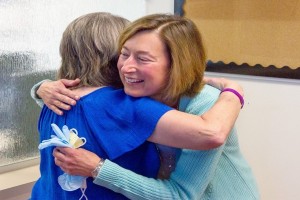Amazing ‘Domino’ Transplant Procedure Saves Cystic Fibrosis and Heart Patients at Stanford
Written by |

When it comes to organ donation, the common scenario is that one patient benefits from another’s misfortune. This time, however, an exceptionally rare heart-lung-heart domino transplant has saved the lives of two lucky women.
Diagnosed with cystic fibrosis before the age of one, for Tammy Griffin, receiving both a new heart and lungs were desperately needed. She was left with very little lung capacity, and dependent on an oxygen supply at all times. Since her condition had caused one lung to shrink and the other to expand, her heart had been pushed aside by the changing lungs. It was in itself, however, highly functional.
To receive a heart-lung combination is not an easy task. The waiting lists for all organs are long, and when a donor dies, the heart and lungs are usually split to benefit two persons. The highly unusual procedure, called a domino transplant, is another way for organs to benefit two.
The surgery has only been performed at Stanford eight times before – and the last time was 22 years ago. This time, it was led by Joseph Woo, a cardiothoracic surgeon at Stanford Health Care who oversaw and coordinated the surgical teams that performed the domino transplant. Dr. Woo is also professor and chair of cardiothoracic surgery and the Norman E. Shumway Professorship in Cardiovascular Surgery at the Stanford University School of Medicine.
Meanwhile, Linda Karr was as desperate for a new heart. For nearly twenty years she had lived with right ventricular dysplasia, a genetic condition disturbing the heart rhythm. Lately, Karr could no longer walk even a short distance without stopping for rest, as her heart’s abnormal rhythm did not tolerate the strain.
“My doctor told me I’d have to be hospitalized to move up—and if my deterioration was rapid, I might not get a heart in time,” Karr said in a press release.
Despite this condition, her position on the waiting list was low, and so were her hopes of getting a new heart. To her surprise, Stanford contacted her on January 30, and two days later, on February 2, she lay on the operation table surrounded by the Stanford experts.
The domino transplant procedure involved three surgical teams; one to remove the heart-lung combination from the donor, a second to fit the heart and lungs into Griffin’s body, and a third team that transplanted Griffin’s heart into Karr.
“The extraordinary work of Dr. Woo and his team demonstrates the very best of an academic medical center—where our research informs the development of revolutionary treatments like the domino procedure, which we then use to save the lives of our patients,” said Lloyd Minor, Carl and Elizabeth Naumann Dean at Stanford Medicine.
 The two women met for the first time on March 17, accompanied by families and doctors. They both expressed their gratitude to the original donor and his family, setting the first block in motion of this domino transplant procedure.
The two women met for the first time on March 17, accompanied by families and doctors. They both expressed their gratitude to the original donor and his family, setting the first block in motion of this domino transplant procedure.
Likewise, Karr was full of appreciation for Griffins generosity. “I feel as though a world of possibilities open up now for my future, kind of a second chance in life,” Karr told her during the meeting, covered by the release. “Me, too. I feel the same way,” Griffin responded.
During the emotional meeting, where Griffin could literally hear her heart beat in the other woman’s chest, Karr noted “Even though we were strangers before today, you’ll always be part of me,” and promised she would take good care of her new heart.
“This story highlights how scarce organs are today. People are waiting and dying on those transplant lists. We would like to see that change,” concluded Dr. Woo.






